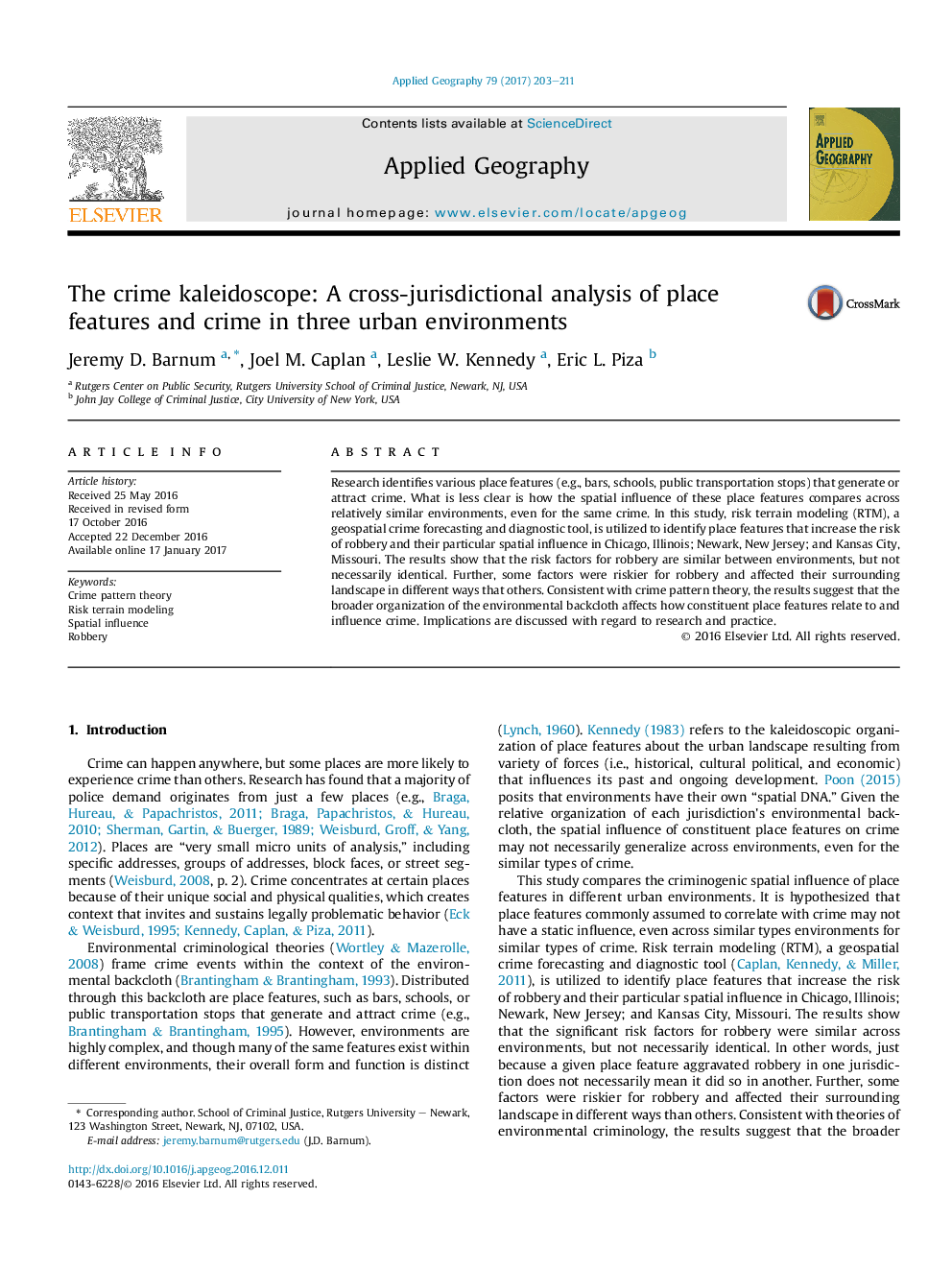| Article ID | Journal | Published Year | Pages | File Type |
|---|---|---|---|---|
| 6458441 | Applied Geography | 2017 | 9 Pages |
â¢Place-based risk factors for robbery are explored across three urban environments.â¢Risk terrain modeling is used to identify risk factors and their spatial influence.â¢The risk factors for robbery differs across jurisdictions.â¢The spatial influence of risk factors on robbery varies across jurisdictions.â¢Jurisdictions have unique environmental backcloths that affect crime differently.
Research identifies various place features (e.g., bars, schools, public transportation stops) that generate or attract crime. What is less clear is how the spatial influence of these place features compares across relatively similar environments, even for the same crime. In this study, risk terrain modeling (RTM), a geospatial crime forecasting and diagnostic tool, is utilized to identify place features that increase the risk of robbery and their particular spatial influence in Chicago, Illinois; Newark, New Jersey; and Kansas City, Missouri. The results show that the risk factors for robbery are similar between environments, but not necessarily identical. Further, some factors were riskier for robbery and affected their surrounding landscape in different ways that others. Consistent with crime pattern theory, the results suggest that the broader organization of the environmental backcloth affects how constituent place features relate to and influence crime. Implications are discussed with regard to research and practice.
